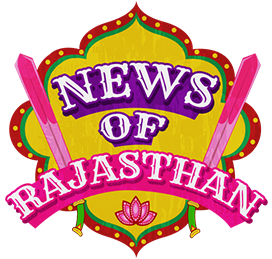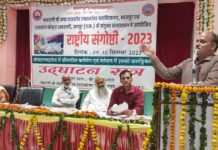
Rampura, Udaipur’s Government School Emerges as a Role Model in Cleanliness with Innovative Concepts like Swachhta Class and Bal Sansad under Swachh Bharat Mission.
‘Swachh Bharat Abhiyan’, a pledge for awareness, involvement and on-campus hygiene, swept across Rajasthan as kids from Rampura resolved to bring a change in rural society. When we visualize a government school, we’re instantly reminded of dingy classrooms, dirty corridors, tobacco stained walls and shabby, unwashed students. However, Government Upper Primary Sanskrit School (GUPSS), located around 12 kilometres from Udaipur, emerged as an exception to pre-set conceptions.

Under the nationwide ‘Swachh Bharat’ hygiene and sanitation drive, school headmistress Sheela Sharma attempted to inculcate healthy habit in students through group participation in school activities. Today, GUPSS is perhaps the only school in Rajasthan to implement unique ideas like Swachhta classes and Bal Sansad to ensure proper decorum and cleanliness within school premises.
Success Stories: When School Kids Started a ‘Swachh Vidyalaya Drive’

Mission: To stand out as a role model in cleanliness for inspiring other schools.
The unique journey of this school traces back to the year 2004, when current head mistress Sheela Sharma joined there as a teacher. Since 90% students enrolled in the schools come from nearby tribal areas, their parents were less aware about hygiene practices. However, Ms. Sharma was determined to change this attitude. She made it mandatory for students to take a bath at the hand pump situated on school ground. Those who didn’t, were not allowed to enter the classrooms.
This is how the concept of ‘Swachhta classes’ came into existence. Ms. Sharma arranged comb, soap, oil and towels for students. She herself bathed them to ensure they’re spick and span before attending their classes. Today, the school accommodates 110 students and 3 teachers dedicated to this mission.
When questioned about kid participation, Ms. Sheela said, “It has been 12 years now and my students come before time to school every day. They take a bath, help their siblings to do the same and then go to their classes”.

Students anxiously wait for the Swachhta period, where they enjoy gardening, watering plants, cleaning their classrooms and making rangolis. The headmistress contributes a part of her salary to arrange resources like buckets, paint brushes and colours. With these materials, kids prepare informative paintings and drawings to generate awareness regarding clean environment. They also take keen interest in floral arrangement and wall painting.
A few local gardeners and nature lovers voluntarily donated flower pots and gardening resources to help beautify the school aesthetics. Today, they’ve around 70 flower pots in their garden. Each class takes turns to look after the school on a weekly basis. They also have a Bal Sansad or Student Parliament that has Safai Mantri, Jal Mantri and Paryawaran Mantri who’re responsible for maintaining proper sanitation in and around school premises.

In short, this is a school where every child takes pride in their class and nursery that they’ve created out of love and enthusiasm. Teachers like Ms. Sheela and schools like GUPSS are a soul-stirring example for us. They inspire ‘holistic learning through awareness’ despite shortage of resources and lack of financial support. If other schools fall into their footsteps, it will be the biggest cleanliness revolution in the history of India. If they can, why can’t we?







